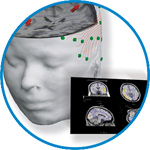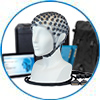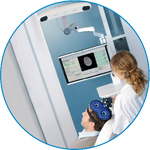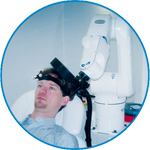- Home
- About ANT
-
Products

asa
asa is a highly flexible EEG/ERP and MEG analysis package with a variety of source reconstruction, signal analysis and MRI processing features.
.jpg)
eego mylab
The new frontier in multimodal brain research. With up to 16 kHz sampling rate, 256 EEG channels and unique software features, eego mylab gives you an unprecedented in-depth understanding of the human brain.

eego sports
eego sports offers complete freedom to collect high-density EEG data, bipolar EMG signals, and a variety of physiological sensor data, wherever and whenever required, with publish quality data in less than 15 minutes!

waveguard net
The waveguard net sets a new standard for research applications requiring high-density EEG data acquisition with quick preparation time, high flexibility, and subject comfort.

visor2
Our new and upgraded visor2 solutions integrate all the latest technologies for navigated rTMS, dual-coil navigation support, EEG-TMS recordings and pre-surgical evaluation for the highest quality in research and clinical procedures.

powerMAG ANT
The PowerMAG ANT 100 rTMS stimulator is designed for the specific needs of high-end TMS applications. Powerful high-frequency TMS as well as high precise single pulse and repetitive pulse protocols are combined in one single device.

xensor
xensor offers the solution for digitization of 3D electrode positions. xensor takes care of the whole procedure; it records, visualizes and stores positions acquired with a dedicated digitizer.

waveguard original
waveguard original is the cap solution for EEG measurements compatible with fMRI, MEG and TMS system. Use of active shielding guarantees performance in even the most demanding environments.

waveguard connect
waveguard connect EEG caps are a perfect match for hospitals and institutes aiming at reliable EEG, maximum uptime and great patient comfort! For optimal signal quality, the electrodes are made of pure, solid tin.

waveguard touch
waveguard touch is a dry electrode EEG cap. The unique Ag/AgCl coated soft polymer electrodes provide stable, research-grade EEG signals while maintaining subject comfort. The combination of these innovative dry electrodes and the industry-leading waveguard cap makes waveguard touch the best solution for dry EEG.

smartmove
smartmove allows planning of a complete TMS session ahead by defining stimulation sites based on anatomical MRI information and functional information like fMRI, PET or EEG/MEG.
Stay - References
- Support
- Events
- News
- Contact Us
You are here
Do we activate specifically somatosensory thin fibres with the concentric planar electrode? A scalp and intracranial EEG study
Do we activate specifically somatosensory thin fibres with the concentric planar electrode? A scalp and intracranial EEG study
Laser-evoked potentials (LEPs) are acknowledged as the most reliable laboratory tool for assessing thermal and pain pathways. Electrical stimulation with a newly developed planar concentric electrode, delivering stimuli limited to the superficial skin layers, has been suggested to provide selective activation of Aδ fibres without the inconveniences linked to laser stimulation. The aim of our study was to compare the scalp and intracranial responses to planar concentric electrode stimulation (CE-SEPs) with those of LEPs and standard somatosensory-evoked potentials (SEPs). Sixteen healthy subjects, 6 patients with intracortical electrodes, and 2 patients with selective lesions of the spinothalamic pathway were submitted to Neodymium:Yttrium-Aluminium-Perovskite laser stimulations, and electrical stimulations using standard electrodes or planar concentric electrodes (CE). In both healthy controls and epileptic implanted patients, CE- and standard SEPs showed significantly shorter latencies than LEPs. This is consistent with Aβ-fibre activation, peripheral activation time being unable to account for longer LEP latencies. In the patients with spinothalamic lesions, LEPs were absent after stimulation of the affected territory, while CE-SEPs were still present. For these 2 reasons, we conclude that the planar CE does not selectively activate the Aδ and C fibers, but coexcites a significant proportion of large myelinated Aβ fibres that dominate the ensuing cortical response. The use of CE-SEPs for the detection of spinothalamic system lesions is therefore not warranted; the planar electrode can, however, represent a useful tool to study nociceptive reflexes, which can be reliably elicited even in the presence of Aβ coactivation.

 Read more
Read more.jpg)




